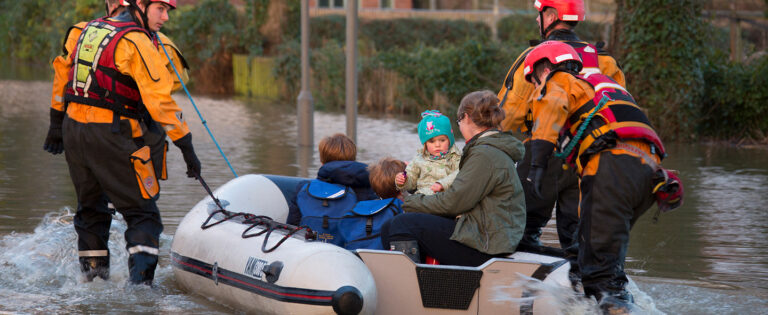
When an emergency strikes, most government offices don’t have the luxury of shutting down or take their time to figure out the next steps. When others run away, government is expected to run toward a crisis. But government can only do that if they have an emergency communications plan in place.
Why? The answer is simple: You can’t shelter people during a storm if they haven’t been told where safe locations are. The public can’t keep an eye out for missing children if they don’t know children are missing in the first place. And an agency caught flat footed, completely unprepared for the unexpected, can cause mass confusion.
Fortunately, there is no shortage of good examples of emergency communications done right. Below are three examples of how government has faced a crisis and come out stronger on the other side.
Emergency: On October 4, 2017, a mother called police to report that her two children, ages 9 and 5, did not arrive home after school.
What They Did: The city immediately launched a hunt for the children. It used CodeRed, a targeted phone and text alert system that residents can opt into, to reach people throughout the city. They also posted alerts and updates on govDelivery, Facebook, Twitter and NextDoor.
Results: The children were found safe in a park at 9:30 p.m., about five hours after they were reported missing. The number of people offering to help in the search was so overwhelming that the police eventually said they didn’t need any volunteers. The GovDelivery email notification system provided a significant reach of their over 20,000 subscribers, and Facebook had nearly 5,300 shares.
Emergency: The state of Florida is often battered by hurricanes. The county kicked into action as Hurricane Irma approached the area.
What They Did: Leon County has a three-part emergency communications strategy: Prepare, Act and Recover. As part of preparation, they had already produced a 2017 Disaster Survival Guide and related smartphone app, as well as had ongoing preparedness outreach on social media and billboards. As Irma prepared to hit, Leon County sent daily email updates, partnered with their local NPR affiliate, held three press conferences, sent out 11 press releases and posted 70 times to social media. During recovery, the county provided an emergency update portal to provide information about debris removal. Additionally, Leon County also had a proactive strategy to delivery a daily newsletter via govDelivery to update citizens called “Hurricane Irma Daily Brief.”
Results: Residents were better informed about how they could prepare for Irma with a number of resources and hourly updates from the NPR affiliate, which had a reporter on-site at the emergency command center. Facebook posts reached nearly 770,000 people, while Twitter reached 349,000. Between August and September of 2017, Leon County’s subscriber base grew by over 7,000 subscribers as a result of the Granicus Network and direct sign ups for information.
Emergency: Zika, a disease that can cause birth defects if contracted by a woman during her pregnancy, quickly spread across the Americas. Its transmission is unique—it can be spread both by mosquitoes and sexual contact—and communications around this epidemic was time sensitive and urgent.
What They Did: The agency had an emergency communications plan in place and set it into action immediately. The CDC updated information on its website and elevated travel notices to affected countries to “Alert” (use enhanced precautions while visiting). Information on the CDC’s website includes interactive tools, such as a risk assessor and a Zika map showing affected areas. Notices were posted on social media, at ports of entry and through email. Concerned travelers could also call the CDC hotline or ask questions on a Reddit AMA (“Ask Me Anything”) thread. Because of the risk of sexual transmission, the agency launched an online campaign targeted at men to prevent the disease spreading to their partners.
Additionally, knowing that smartphone users access health and travel information on their phones, the CDC identified Granicus’ Interactive Text as an effective channel for communication with travelers. The messages helped subscribers determine if they were traveling to or returning from an area with a risk of Zika and if so, were delivered prevention messages over a 30 day period.
Results: The Zika travel information page was viewed 5.3 million times in 2016, while travel notices were viewed 7.6 million times. More than 2.1 million people used the Zika map. Information about the disease proved popular on the CDC-INFO hotline, for which 18 percent of fielded inquires were Zika-related. The recent digital campaign aimed at male travelers and Zika had a reach of 57 million people and drove 137,000 clicks to the CDC’s website. Additionally, through active promotion of the CDC’s interactive text program, the initiative garnered over 20,000 subscribers in six months.
Does your agency’s emergency communications plan need updating? Join us on our upcoming webinar, From Crisis to Calm: Communicating in an Emergency. It runs from 2 – 3 p.m. ET on December 12, and you can register here.